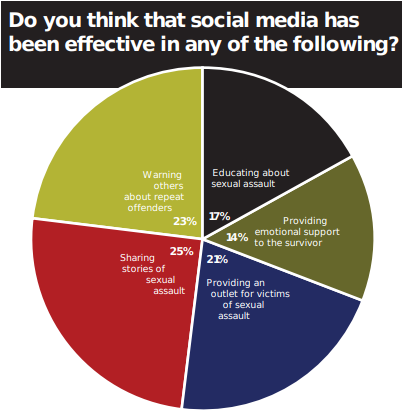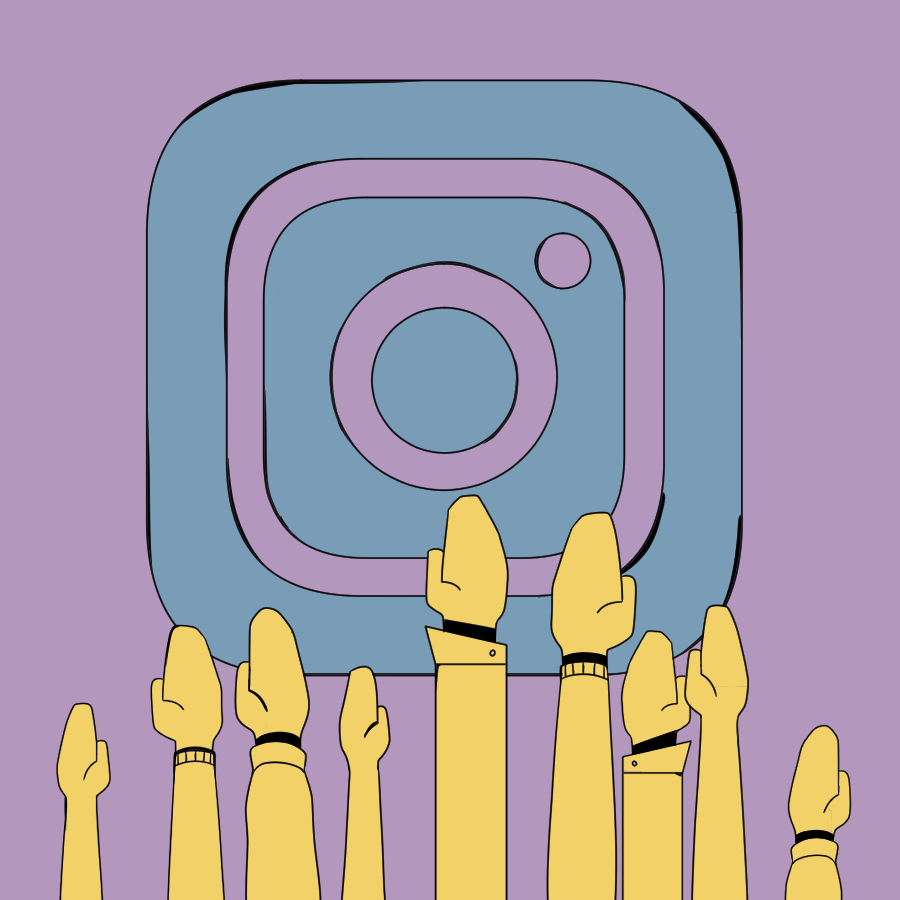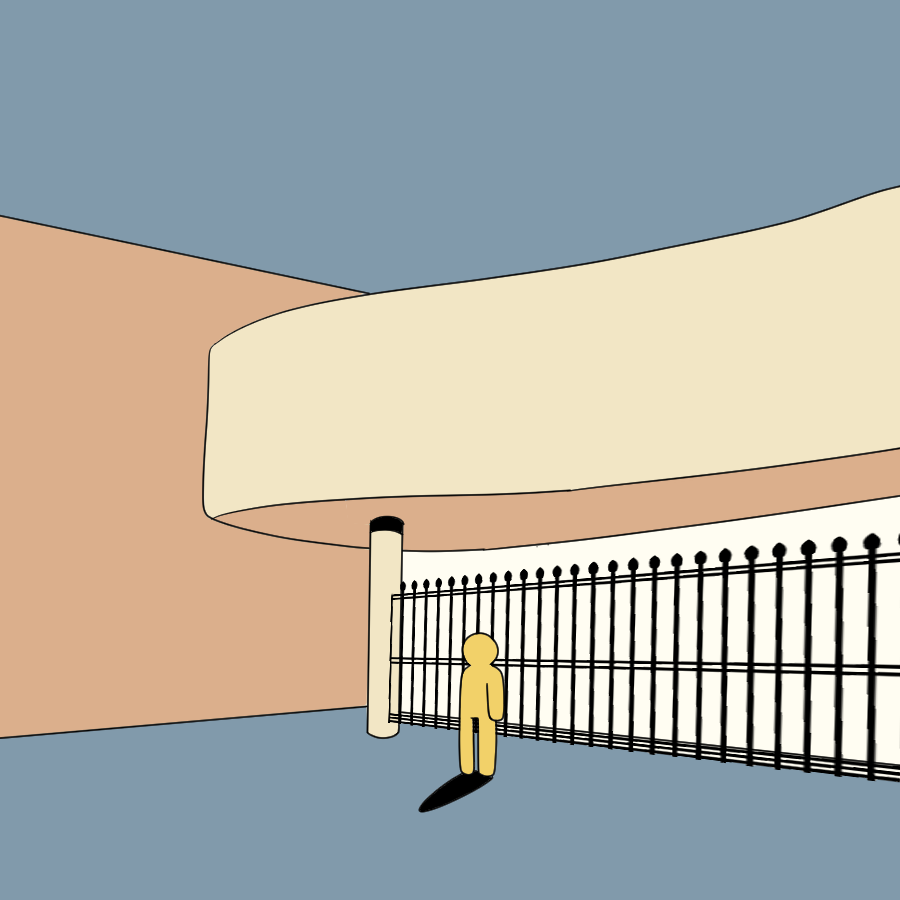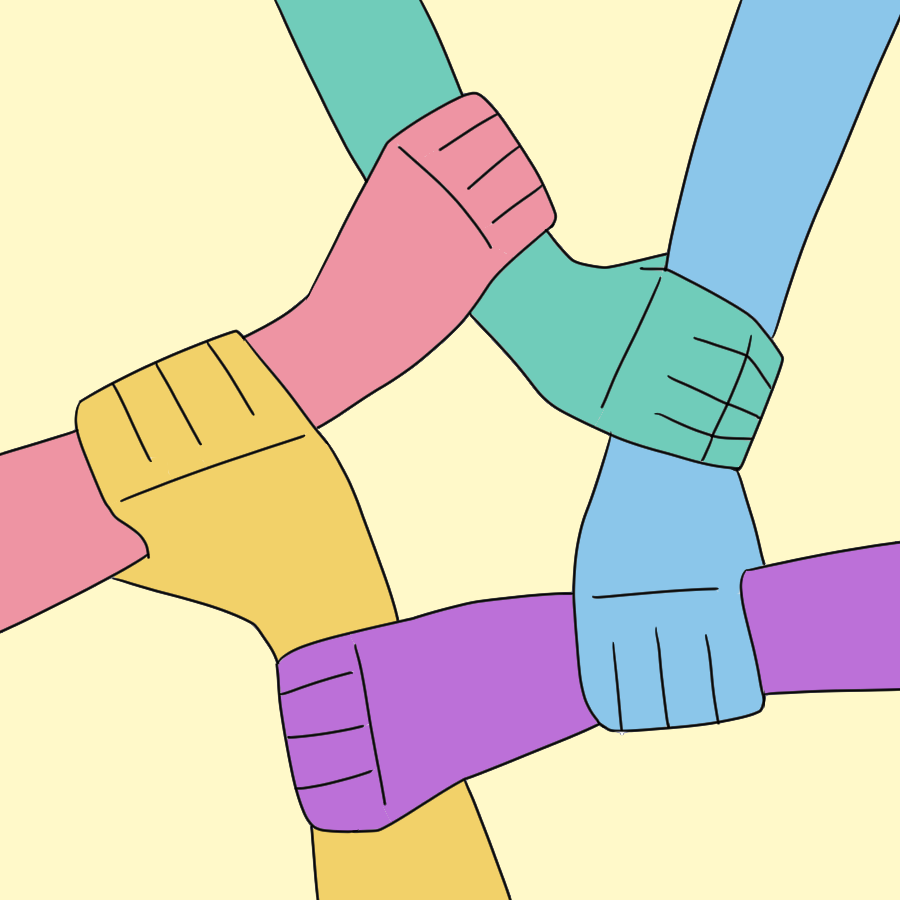Story by Georgia Parsons & Quinn Manzo
Associate Feature Editor & Staff Writer
Illustration by Tarry Song
Associate Design Editor
According to 64 percent of survey takers, social media has shown to be effective in sharing important information about sexual harassment and assault. Information can be spread quickly and broadly on social media, which — especially in the case of sexual assault and harrassment — can provide viewers with definitions and resources, and it can also warn the masses about repeat offenders.
Survivors witness the largely positive reactions to other survivor’s stories and become compelled to share their own, especially in an online environment where they can take control of their own narrative.
“I didn’t feel like there was that much pressure in a digital setting versus us being at school. I didn’t have to think about confronting people at school the next day. I was also able to gain support from other students. This way, I could state my experiences directly to other people,” Morgan Lee, a junior who shared her story online this summer, said.
These accounts are not limited to sexual assault, however; they acted as more of a public outlet for inappropriate behavior such as racism and bullying. Some of the callout posts about racism received backlash, especially on accounts dedicated to sexual assault, for being unproductive. The accounts also faced legal issues because some of the posts dealt with rape — a felony. The manner in which these stories were shared differed. In some stories both parties were anonymous and in others, both the survivor and the aggressor were tagged. Despite the anonymity of some stories, oftentimes the perpetrator could be easily guessed, especially since the accounts were centered around a specific school or community and word travels fast among peers. Some survivors also shared stories on their individual accounts, though the audience was often the same as that of the public accounts.

Despite the positives of sharing stories on these platforms, social media does have downsides. While Instagram ensures that every person’s story will be told, the response to these stories often only makes the situation worse. On these platforms, virtual harassment of the abuser is often perceived as justice enough for their victim(s) — but it’s not.
Moreover, the fact that these accounts involve minors makes it harder to track if there was a power imbalance, if they were intoxicated, or if the case stands legally depending on the degree of assault. Disputes on cancel culture also come into play.
Cancel culture is defined as the exclusion of a person from social or professional circles. There are often debates on who should be “cancelled” or not based on their social standing and actions, which can include an array of issues such as making racist remarks or bullying someone.
“Cancelling” typically involves harassing the accused online, however this “cancelling” rarely translates off the Internet. Because this process is not being legally mitigated by adults, both justice and the safety of the survivor are not assured. The assaulter may private their Instagram account or delete their posts to limit the digital footprint of their action, but in real life, these people are often still able to hold leadership positions, represent the school on a sports team, and participate in extracurriculars.
Additionally, victims open themselves to scrutiny and harassment by posting their deeply personal stories on such a public forum. Boundaries can be violated and stories can be overanalyzed or taken out of context. Because of this, a survivor can face victim blaming and further harassment. The public nature of these platforms may compel people to take the situation into their own hands by contacting the survivor’s family or notifying administration without the survivor’s consent, which further complicates the situation for every person involved.
“There can be a lot of unintended consequences that come from speaking out in such a public forum,” Prime said. “For one, they may not think about what it means to expose themselves as survivors and once their identity is known, they may then be viewed only through that lens by the people around them. This is good if they are directed to get support but it can be easy for people to forget that they are more than just a victim and then only treat them as such. It can also be damaging to an alleged perpetrator if allegations are unfounded; they too will then be viewed only through the perpetrator lens and tried and judged in a public forum.”
Ultimately, it is the victim’s choice whether or not they want to take their stories to social media or to administration. Social media can be a difficult terrain to navigate, which is why the school needs a strong administration to provide support for students who come forward no matter the platform, getting the aid they need to hold perpetrators accountable.



